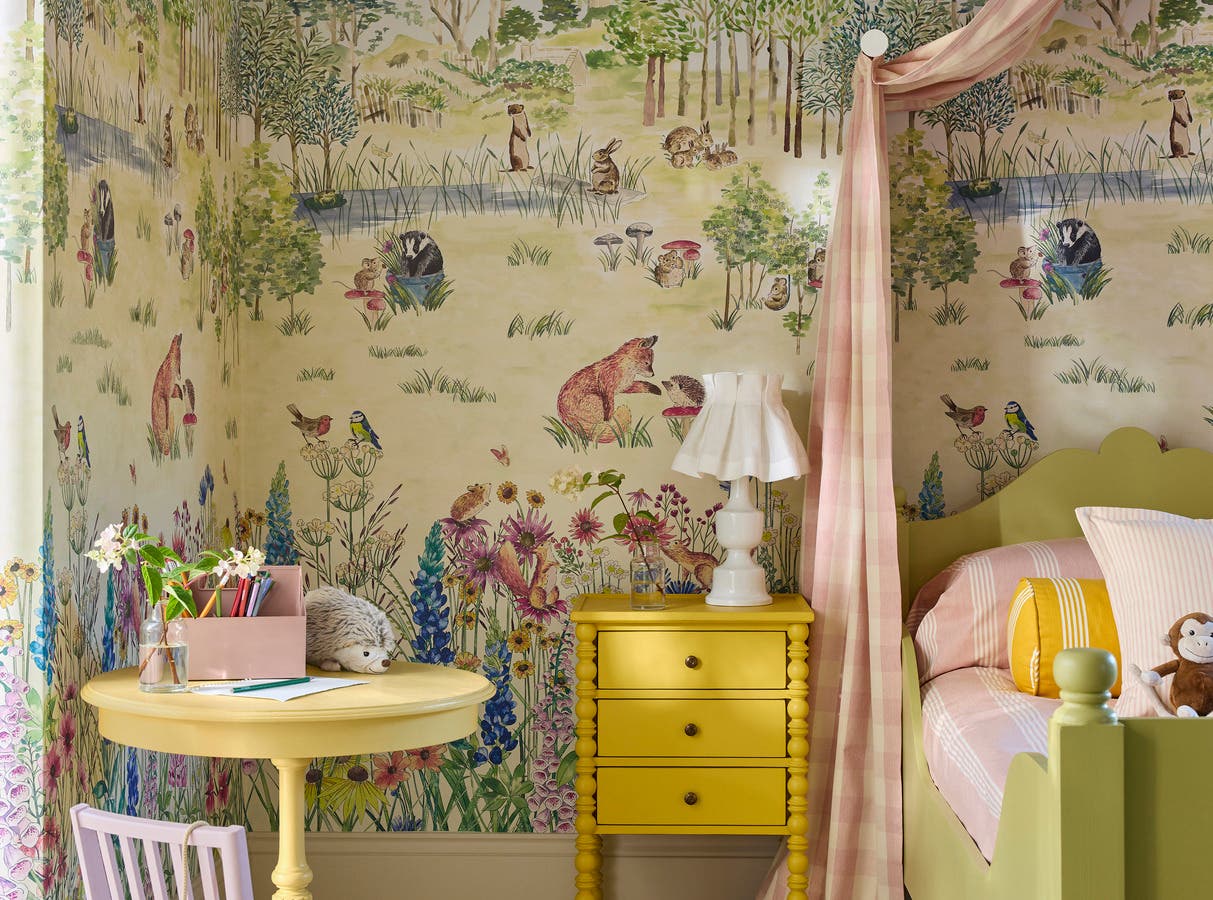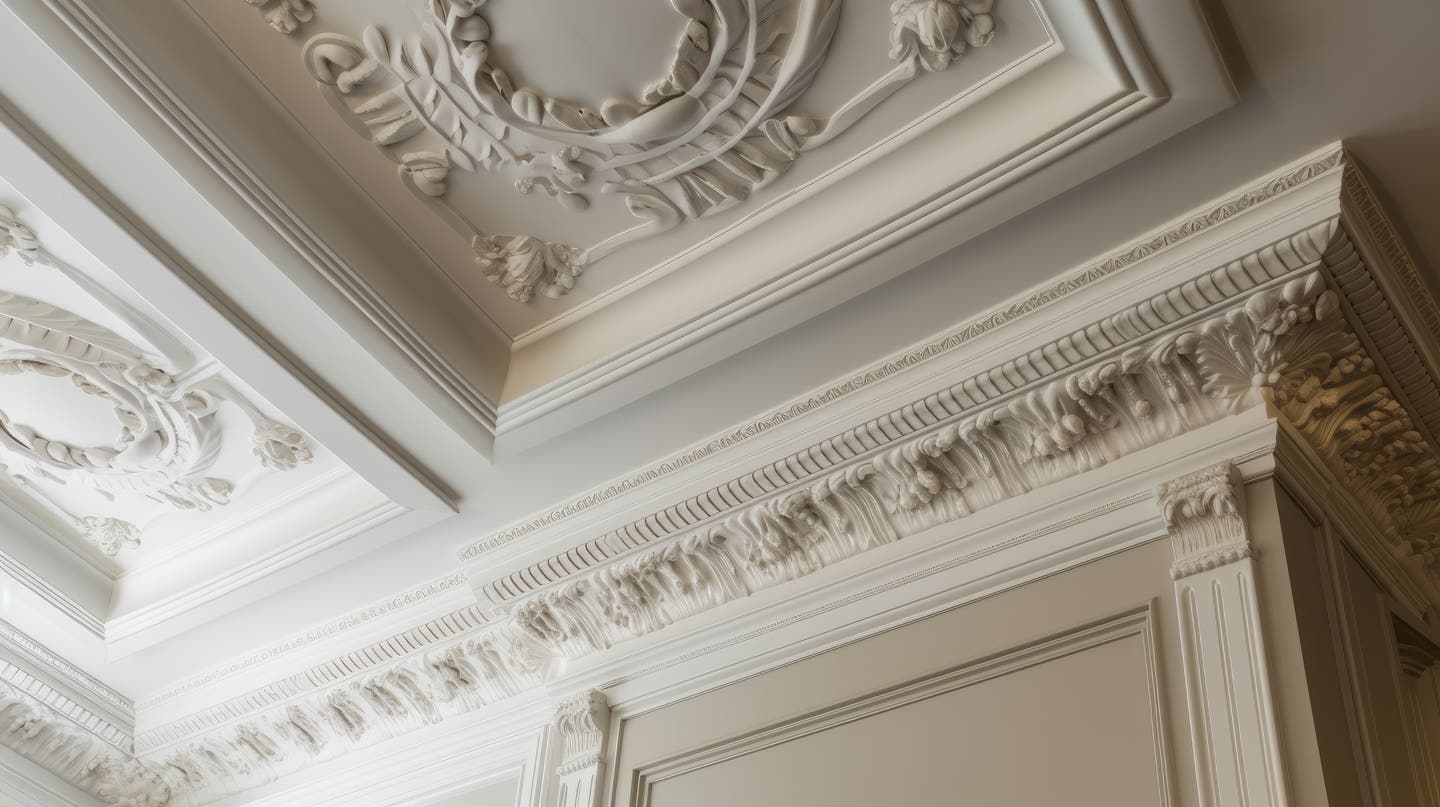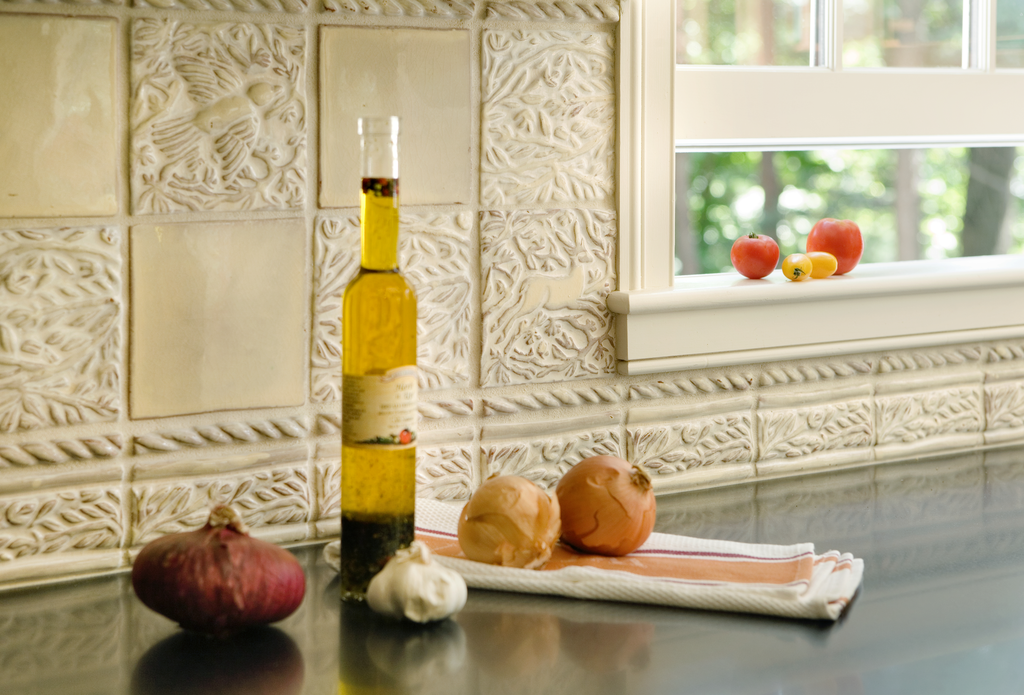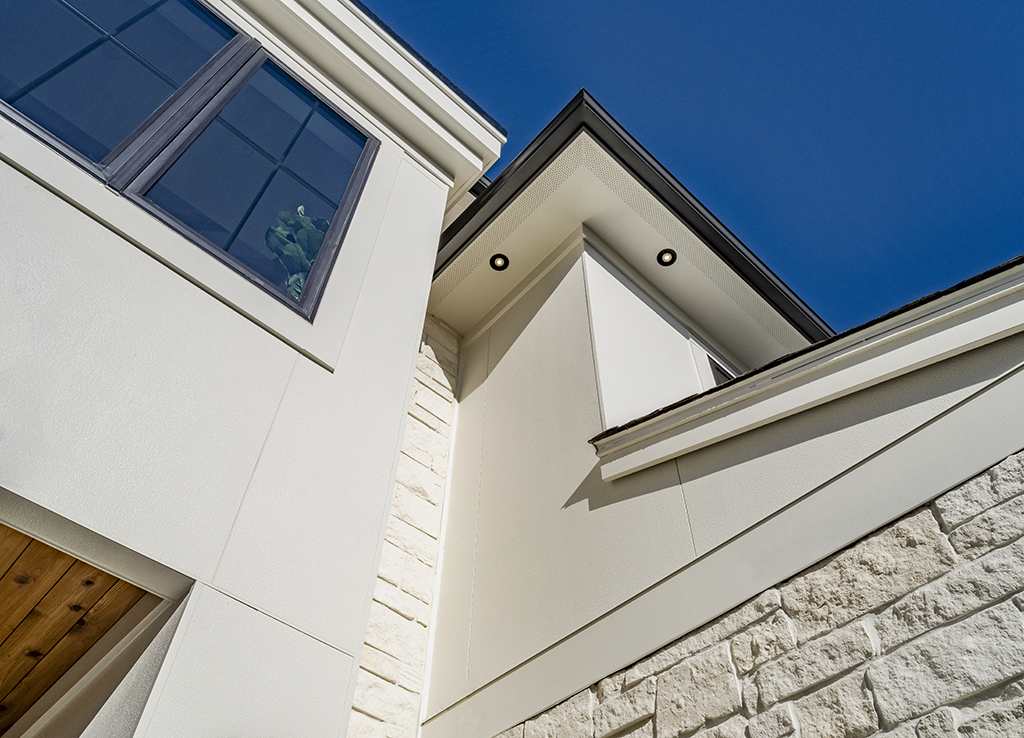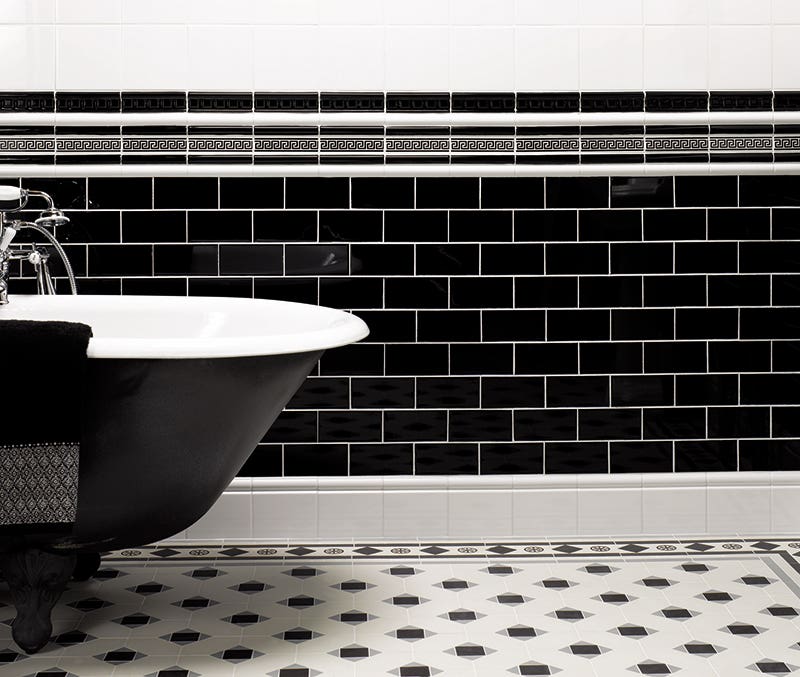
Product Reports
Historic Bathrooms: An Evolution
When it comes to finding products historically in-step with a period house, bathrooms leave a short but ever-changing trail. As running water and soil plumbing wormed their way into houses in the 1880s, they primed the fits-and-starts evolution of totally new kind of space. Earlier, portable, china washing bowls and sheet-metal tubs became tethered in place as fixtures, and these were soon surrounded and protected by special-purpose finishes – all of which were reinvented every decade, it seems, to meet updated ideas of bathing and modern lifestyles. Here’s a look at how some iconic finishes and fixtures key a bathroom to particular eras.
Miles of Tile
In the late-19th century, as bathrooms grew more common and sophisticated, the shortcomings of wood and varnish for floors, wainscots, and tub enclosures prompted a search for materials that were not only more water-resistant, but also more sanitary. By 1900, the impact of germ theory advanced by scientists Lister and Pasteur in the 1860s was percolating down to the popular level. In a pre-antibiotic age, the primary strategy homeowners could wield against invisible microbes was eliminating dirt and any surfaces or corners where it might accumulate, and glazed, all-white tile work became the essential weapon.
Explains Anna Malkin of Tile Source Inc., “Up to 1840, practically no tile was made in the U.K., but the phenomenal growth in population thereafter led to a need for greater hygiene and a boom in tile after 1870 – particularly in glazed tile, which is easily cleaned.” She adds that Minton’s, the famed tile works of the Victorian era, started in 1793 both by bringing back encaustic tile (inlaid tile last made in great quantities in the middle ages) and glazed tile. “At the same time factories, such as Villeroy & Boch and Limoges, were opening in Europe. The first factory in America was the Pittsburgh Encaustic Tiling Company, formed in 1876.”
Seemingly overnight, the ubiquitous standard for early-20th-century bathroom walls became 3 x 6 in. glazed white tile laid in running bond with fine grout lines. Brian Byrd of American Restoration Tile notes that, “The 3 x 6 in. tile came to be known as subway tile because of its use in the early subways of Boston and New York.” The origins of the format are obscure, though based upon his research, he has some hunches. “The old floor tile made by the American Encaustic Tiling Company was 6 x 6 in., so it is not hard to speculate that someone figured out that cutting these tiles in half would make attractive walls when laid in a bricklike pattern.” He notes that 4 ¼ in. square tiles can be adapted in a similar way. “When you cut them diagonally into triangles, you get a 6-in.-long hypotenuse – just right for a decorative accent with subway tiles.” Malkin adds that in the U.K., where the main sizes were 4 x 4 in. and 6 x 6 in., 3 x 6 in. tiles are, in fact, often called half-tiles.
In practice, experts in the 1910s deemed subway tiles only one of the “new and special shapes … absolutely essential to the modern construction of Hospitals, Bathrooms, Kitchens.” Combining a dozen or more curved caps and outside corners with cove pieces at the junction with floors rounded off every angle in a room. Promoting its sanitary base and coves in 1909, the Cambridge Tile Manufacturing Company wrote, “No corners are left for dirt and germs to accumulate; this style of wall is fully endorsed by all physicians.”
Hand-in-glove with subway wall tiles came the iconic hex floor tiles, often with mosaic patterns or borders. In 1912, for example, one shelter author advocated that a master bathroom, “Usually … has a floor of white, unglazed, hexagonal tile, with a 4 x 6 in. white glazed tile for walls with cap and sanitary base, marble threshold and plinths.” The origins of hex tile floors are also obscure but likely practical and tied to the sanitary movement. Notes Byrd, “Tile makers of the era wanted a floor product that would stand up to aggressive cleaning processes, so they may have looked to British encaustic floor tiles as models.” Literature of the day added that, “Small hexagonal floor tiles permit sections to be taken up with little difficulty and replaced at small expense.”
As time and tastes moved on, so did hex tiles. “From 1 in. hexagons in white, and using what pigments were available for black, blues, greens and chocolate, tile-makers moved into other dimensions and mosaic colors,” says Byrd. “By the 1920s, they started experimenting with brighter colors, such as olive, navy and pink. If one tile-maker came up with a new color, such as yellow, competitors would soon follow.” Adds David Malkin, also of Tile Source Inc., “It is safe to say that by the end of World War I, white tiles were giving way to colored tiles.”
Sustaining a Shine
The other bathroom finish that became universal after 1900 was the warm, yellow-silver shine of nickel plating on faucets, showerheads and bathroom hardware – indeed almost any metalwork. Nickel plating was innovative but not new. The ancients are believed to have plated jewelry and other precious objects with gold millennia ago, and experiments with chemical plating of nickel – a hard, shiny, corrosion-resistant element ideal for protecting metal – took place in the 1830s.
However, what suddenly propelled nickel to immense popularity after 1870, was the perfection of electroplating, particularly the process patented by one Dr. I Adams. In short order, bright work on goods from cook and heating stoves to carriages to electrical appliances was protected with nickel plating for attractive, easily maintained surfaces, and from here it was a natural leap to bathroom plumbing.
Then as now, faucets were cast in brass but, though rust-proof, naked brass spotted and corroded if not maintained, making evident in short order the advantages of nickel plating. By 1900, though most bathroom fittings could still be ordered in plain brass, nickel was the new normal. “Before chrome plating took over in the 1930s, nickel was the finish of choice,” says John Vienop of Bathroom Machineries in Murphys, CA. He notes that while nickel plating started to appear in the latter 1890s, it was omnipresent after the century mark until about 1926. “Every fitting or exposed pipe in the bathroom should be nickel plated,” wrote one 1910s authority.
Ideal as it was, nickel plating was relatively soft, so much so that under repeated cleanings in commercial installations, it could be polished away. This Achilles heel led nickel to be surpassed by chromium, which is a harder metal, once plating methods were perfected in the mid-1920s.
As recently as the early-1990s, nickel bathroom fixtures of any ilk were impossible to find and considered hopelessly obsolete. Then, in the inevitable swings of tastes, manufacturers rediscovered the rich glow of nickel plating and it began reappearing on the surfaces of fixtures new and period-inspired – a nice boon for historic-house devotees. “If you want durability, you’ll pick chrome,” says Vienop, “but if you want authenticity, nickel is the way to go.”
The Shower and Tub Tango
Sanitation and improved cleaning was clearly the driver behind the nature of historic bathroom finishes but, surprisingly, not as much for the fixtures they surrounded – at least at the outset. Though today we think of showers as being essential – even the only bathing equipment in some bathrooms – they were uncommon before the 1920s for two surprising reasons. Though early showers had been in use since at least the 1880s in barracks, bathhouses and gymnasiums, these were the realms of men for whom a vertical cascade of water coming from directly above was not a concern. Such a stream of water, however, was considered too rigorous for women – even inadvisable except under doctor’s orders – leaving them to prefer bathing in tubs.
Moreover, what showers did exist were not even intended for actual washing of human bodies. “Before World War I, you really didn’t find a shower in a bathroom,” says Vienop, “unless it was a ribcage shower.” Looking more like gymnasium or laboratory equipment, these contraptions typically stood by themselves on a pedestal or in a dedicated alcove and were most often seen in the bathrooms of well-to-do technophiles. Like steam rooms, they were employed for the spa-like, stimulating and therapeutic effects of water in its various forms and temperatures, rather than a summary spritz to start the day. Says Daniel Cook at The Bath Works in Columbia, TN, “The engineering in these showers was way beyond anything we would use today.”
Early bathtubs too were less about washing than they are now and, for several decades, and here again, finishes helped to propel their popularity. Though claw-foot tubs of sheet metal and cast iron were being produced, it took manufacturers like the J.L.Mott Iron Works in the late-1880s to crack the puzzle of getting porcelain enamel to stick to metal without delaminating, making them practical for modest and upscale households alike. The uses though were still surprising. In tenement houses, for example, a single tub often served multiple apartments (as well as stored ice or firewood when not in use). Conversely, in the bathrooms of the wealthy, there were frequently multiple tubs – perhaps a Roman tub (with identical sloping ends and faucets in the middle of one side) accompanied by a smaller sitz bath and possibly a foot bath – maybe a bidet too – all for soaking various parts of the body. “Tubs made of copper and brass were even believed to have health benefits over and above their hygienic use due to the metals,” adds Cook.
After World War I, large houses and the service staffs they required began to disappear, and with them went the large, multi-fixture bathrooms. However, sanitation and eliminating dirt-collecting spaces remained a concern, if less of a mania, so tub manufacturers looked for ways to avoid the hard-to-clean spaces under and behind footed tubs. Enclosing the tub with tiled sides was a common strategy, and led to experiments in extending the tub rim down to the floor with an additional porcelain-on-iron apron. The big breakthrough came in 1911 when the Kohler Company introduced the built-in tub with one enclosed side, or one side and an end, all cast in one piece. Commonly made as a 5-ft.-long unit, the built-in tub was as efficient as it was sanitary, and when installed spanning the walls of a 5 x 5 ft. space, it created a new paradigm still standard today: the compact bathroom composed of wall-hung lavatory, water closet and tub-and-shower combo.
Showers, which had morphed away from being elaborate, independent fixtures became accessories for a speedy, stand-up soaping, but that did not make them redundant with bathtubs. “Showers, while they have grown more sophisticated recently, started as a means for therapeutic stimulation or efficient cleansing,” says Cook. “Bathtubs, however, have always been about luxuriating.” n
Gordon Bock is co-author of The Vintage House (www.vintagehousebook.com) and available for keynote speeches, seminars and workshops through www.gordonbock.com.
Gordon Bock, co-author of The Vintage House (www.vintagehousebook.com), is an in-demand speaker for courses, seminars, and keynote addresses through www.gordonbock.com.



